Home
June 2016 (ongoing) - Sweeperino - adding the Razzies Mods.
These are the mods suggested by the June edition of the Dutch Razzies article....
The project begins with creating a 110MHz filter. This was built on one of my toner transfer created project boards:-
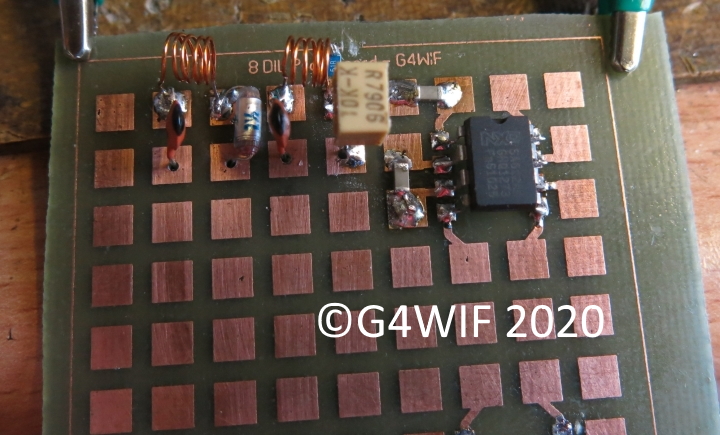
To the left of the 8 Pin D.I.L. chip you can see that I like using surface mount comonents. No holes to drill and no leads to cut.
Testing with the Sweeperino led me up a blind alley for a while :-
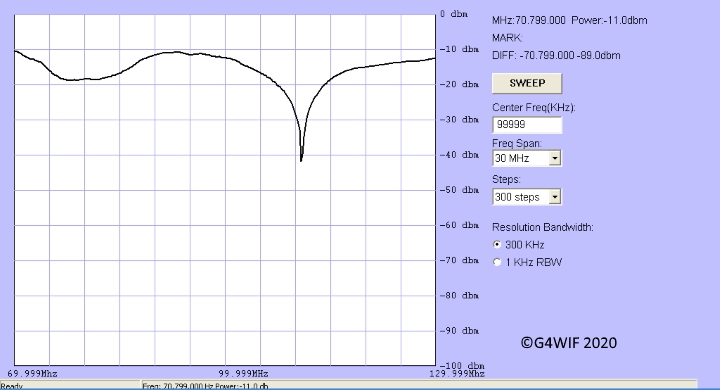
I made a small test jig to keep the cables really short.
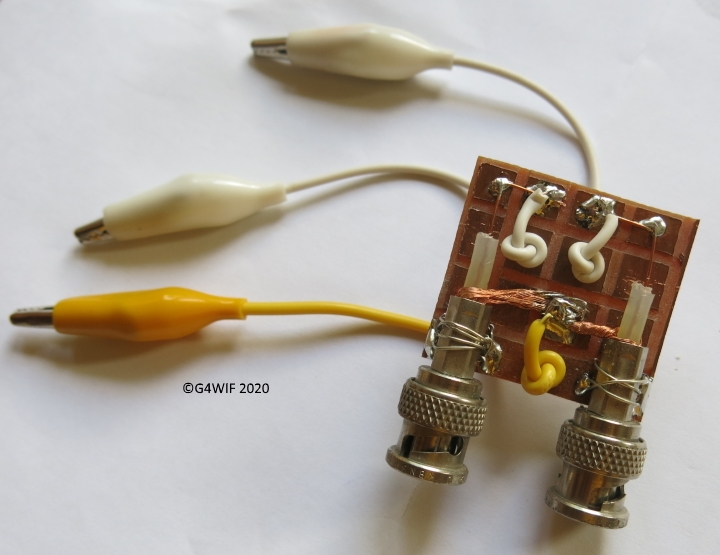
Doubt was entering my mind as to whether the filter had issues or that the Sweeperino couldn't work that high. Clearly I needed another way of testing to be sure. That led me to another diversion. I'm always doing that!
I tried using a zener noise source and TV dongle to characterise the filter. The problem was that at 100 MHz I was receiving all the FM broadcast stations - even the USB lead was working as an antenna and that was masking the filter response. That diversion became the "Faraday Biscuit Tin".
First a new version of the 110 MHz Low Pass Filter
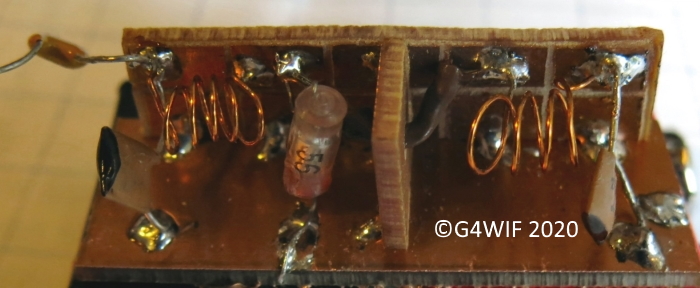
The sweeperino oscillator doesn't seem to like going up into the VHF frequencies. I checked the filter using my signal generator and using the Sweeperino RF meter. I dare say my signal generator is less than linear across the range at VHF, but I'm in the ball park.
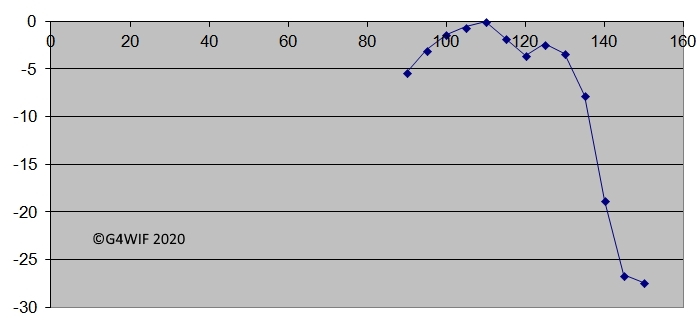
Then the 37 MHz Low Pass Filter.
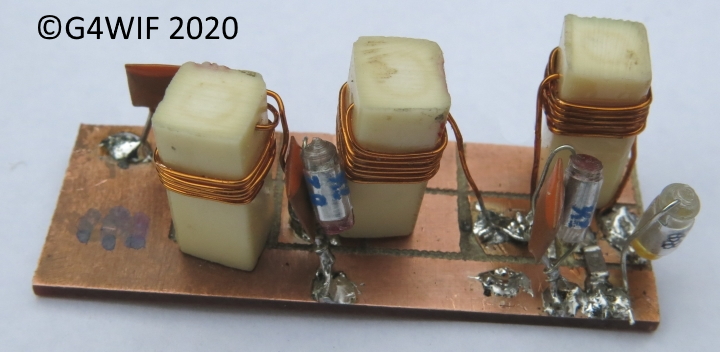
The little square formers are made from plastic chopsticks that I never managed to master.
The PCB was made using my new milling facilities.
The Sweeperino sweep shows that I am getting pretty close
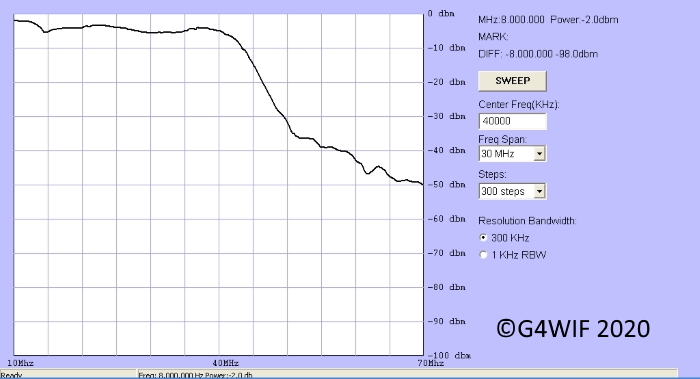
And there I got diverted onto other projects. However the testing of the 37 MHz filter is picked up again in the Comb Generator project. If you compare the Sweeperino trace (above) with the later tests using the comb generator, you can see that they pretty much agree. The big advantage of the Sweeperino is you have all you need in one box and getting test results is very quick.
There is one thing I must mention about the Razzies modifications and that is the terrible bother I had with the NE612 mixer. The canned Oscillator that Frank PA3CNO used must have included capacitive coupling on the output. The one I bought didn't and it played hell with the internal biasing of my NE612 until I worked it out! [more of this later]